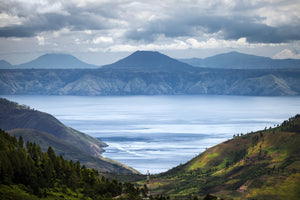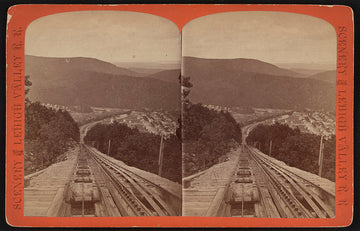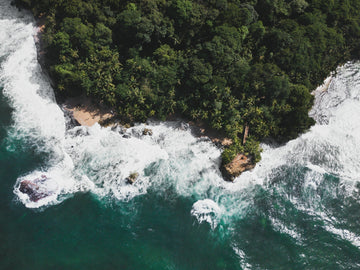Sumatra Uncovered
Sumatra, the largest island in Indonesia, is not only known for its breathtaking landscapes and rich cultural heritage but also for its remarkable coffee. As one of the world's most sought-after coffee origins, Sumatra offers a unique and unforgettable sensory experience for coffee aficionados. In this profile, we will take you on a journey through Sumatra's diverse regions, delving into the island's geography, climate, culture, and history, while exploring the distinctive characteristics that make Sumatran coffee stand out amongst its peers. Join us as we uncover the magic of Sumatra, its captivating allure, and the exceptional coffee it produces.
Geography and Climate
Sumatra, the sixth-largest island globally and the largest island in Indonesia, is located in Southeast Asia and forms the western border of the Indonesian archipelago. It is bordered by the Indian Ocean to the west and the Strait of Malacca to the east. The main regions of Sumatra that focus on coffee production include Aceh, North Sumatra, West Sumatra, and South Sumatra.
Aceh is situated in the northernmost part of Sumatra and is known for its Arabica coffee, particularly Gayo coffee from the Central Aceh Highlands. North Sumatra is home to the famous Lake Toba region, which produces unique Arabica coffee varieties, with Lintong and Sidikalang being other notable coffee-producing areas. In West Sumatra, coffee cultivation is centered around the Solok, Agam, and Pasaman regions, which typically produce Arabica coffee with a strong aroma and medium acidity. South Sumatra is known for its distinct flavor profiles, with Arabica coffee primarily grown in the highlands and Robusta cultivated in lower-altitude areas. Coffee from Mount Dempo is especially sought after.
Sumatra's climate is characterized by high temperatures and abundant rainfall throughout the year, creating a tropical rainforest environment. This climate supports coffee plant growth, as they thrive in warm and wet conditions. The island's volcanic soil, rich in nutrients, provides ideal conditions for coffee cultivation and contributes to the complex and diverse flavor profiles of Sumatran coffee. Coffee is grown at various altitudes in Sumatra, ranging from 800 to 1,600 meters above sea level. Higher altitudes typically result in slower coffee cherry maturation, leading to more developed flavors and nuanced acidity.
Culture and History
Sumatra has a rich and diverse history, with ancient Sumatra being home to several powerful kingdoms such as Srivijaya, Melayu, and the Samudera Pasai Sultanate. These kingdoms thrived on maritime trade, agriculture, and cultural exchanges. The Dutch East India Company arrived in the 17th century, gradually establishing control over Sumatra and introducing coffee during this time. Sumatra became a significant coffee producer for the global market. After World War II, Indonesia gained independence from Dutch rule in 1945, and modern Sumatra has continued to develop its economy, with coffee remaining a crucial export product.
The cultural diversity and ethnic groups in Sumatra include the Batak, indigenous to North Sumatra and known for their vibrant culture and traditional architecture. Batak people are predominantly involved in agriculture, including coffee farming. The Minangkabau, located in West Sumatra, are the world's largest matrilineal society and are famous for their distinctive cuisine, known as Padang food. The Acehnese inhabit the northern region of Sumatra, with a strong Islamic influence on their culture and customs. Aceh has a long history of coffee cultivation, contributing to its economy and cultural identity. Sumatra is home to many other ethnic groups, such as the Lampung, Rejang, and Mandailing, each with their unique cultural practices.
Traditional arts, music, and dance in Sumatra include the Tari Piring (Plate Dance), a traditional Minangkabau dance performed with plates as props, showcasing skill and agility. This dance represents the importance of harmony and balance in daily life. The Tari Saman (Saman Dance) is an Acehnese dance performed by a group of people sitting in a row, using hand movements and body percussion. Designated as a UNESCO Intangible Cultural Heritage, it symbolizes unity and togetherness. The Batak Toba people have their traditional music and dance, featuring unique instruments like the gondang and hasapi. Performances often include storytelling and celebrate important events, such as weddings and harvest festivals.
Major Attractions and Historical Sites
Sumatra is home to numerous natural wonders, including Lake Toba, the largest volcanic lake in the world, located in North Sumatra. It is a popular tourist destination for its stunning scenery, cool climate, and unique Batak culture. Mount Kerinci, the highest volcano in Indonesia, is situated in West Sumatra and Jambi provinces and offers a challenging trek for adventure enthusiasts, with panoramic views and diverse flora and fauna. Bukit Barisan Selatan National Park, a UNESCO World Heritage Site, stretches across three provinces in southern Sumatra and is home to numerous endangered species, such as the Sumatran tiger, elephant, and rhinoceros. The picturesque Harau Valley in West Sumatra features dramatic cliffs, verdant rice fields, and cascading waterfalls, making it a great spot for hiking, photography, and immersing oneself in nature.
In addition to its natural beauty, Sumatra boasts several historical and cultural sites. Maimun Palace, a historical palace in Medan, North Sumatra, showcases a blend of Malay, Islamic, and European architectural styles. Once the residence of the Deli Sultanate, it is now open to the public as a cultural museum. Ratu Boko Temple, a 9th-century archaeological site in Yogyakarta, is believed to be the remnants of a palace complex and offers beautiful sunset views and insights into ancient Javanese culture. The Banda Aceh Tsunami Museum is a poignant museum in Banda Aceh, dedicated to the memory of the 2004 Indian Ocean tsunami victims. It features multimedia exhibits and serves as an educational center on tsunami disasters. The Bukittinggi Clock Tower, also known as Jam Gadang, is a Dutch colonial-era clock tower located in Bukittinggi, West Sumatra. It is a prominent landmark and gathering point, surrounded by vibrant markets and historic sites.
Sumatran Coffee
Sumatran coffee production involves both Arabica and Robusta coffee beans, with Arabica being the more dominant and sought-after variety. Robusta coffee is typically grown in lower-altitude regions and is more resistant to pests and diseases. Aceh, North Sumatra, West Sumatra, and South Sumatra are the primary coffee-producing regions, and each boasts unique flavor profiles and distinct characteristics due to varying altitudes, climates, and soil compositions.
A traditional processing method prevalent in Sumatra is the wet-hulled (Giling Basah) process, which involves the partial drying of coffee cherries before hulling. This method imparts a distinct flavor profile, differentiating Sumatran coffee from other origins. Wet-hulled processing results in coffee with more body, lower acidity, and a distinctive earthy character, contributing to the complex and bold flavors often associated with Sumatran coffee.
Sumatran coffee is well-known for its earthy, herbal, and sometimes woody flavors, which can be attributed to the island's volcanic soil, wet-hulled processing, and local climate. Sumatran coffee is a popular choice for espresso blends and dark roasts. Many Sumatran coffees also exhibit chocolate, spice, and smoky notes, adding complexity and depth to the flavor profile. These characteristics make Sumatran coffee highly sought-after among specialty coffee enthusiasts.
Coffee cooperatives and organizations in Sumatra have initiated community development projects, focusing on education, healthcare, and infrastructure. These initiatives aim to improve the quality of life for coffee-growing communities and support a sustainable coffee industry in the region.
Our Sumatran Sipangan Bolon
Sumatra's captivating blend of geographical features, climatic conditions, and time-honored processing techniques create a truly distinctive coffee. Our Sumatran coffee is produced along the Western shore of Lake Toba. It brews a rich, heavy-bodied cup loaded with complex layers of earthy flavor. Look for notes of tobacco, squash, and a tame spiciness.



